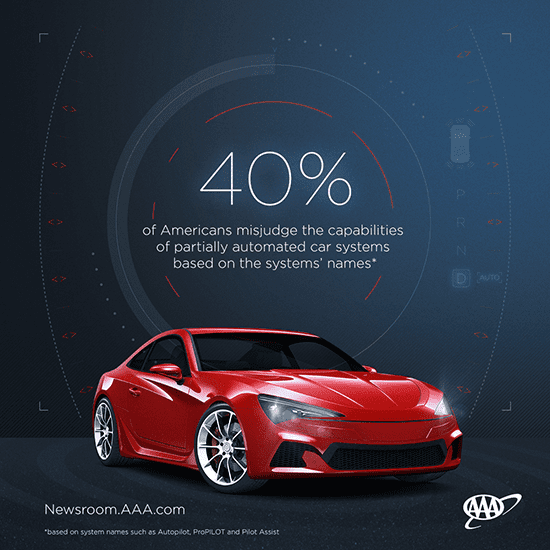AAA’s vehicle testing and research show driver expectations don’t match up with reality
BOISE – (November 15, 2018) – While early developments are encouraging, autonomous vehicle technology will need to be aided by human hands for the foreseeable future, based on AAA’s latest research.
During closed-course testing, vehicles with Level 2 technology (the most advanced available for purchase) were able to maintain lane position, and slow in response to the presence of a tow truck. But the vehicles were affected by a simulated distracted/impaired lead vehicle, and three out of four systems required human intervention to prevent a collision with a simulated stationary car.
“A closed course provided some of the predictability that autonomous vehicles need as well as repeatability needed for research, but when we threw a few curve balls, the technology didn’t always know how to safely respond,” says Matthew Conde, public affairs director for AAA Idaho. “Real-world testing further confirms that, for now, human drivers are still very much in charge.”
When AAA tested the technology on public streets, the systems performed best on open freeways and in stop and go traffic. The challenges came when the vehicles faced moderate freeway traffic, entrance and exit ramps, busy intersections, and some unexpected conditions, such as the absence of lane striping and signage, or a stalled vehicle on the side of the road.
Autonomous vehicle branding has created some confusion about how the technology will work – AAA’s research shows that four out of ten Americans wrongly assume that partially automated systems with names like Autopilot, ProPILOT or Pilot Assist have the ability to drive the car without help. Millennials (59 percent) and Gen X-ers (40 percent) are especially likely to espouse that belief.

“As a participant in Idaho’s Autonomous and Connected Vehicle Testing and Deployment Committee, AAA joins the group in calling for consistency – our laws, technologies, and expectations need to be aligned with systems that have been proven safe for transporting people and products,” Conde said. “We have a ways to go before we’ll achieve that goal.”
AAA shares its findings with the public and with automotive industry stakeholders in an effort to prevent confusion that could result in injuries and fatalities on the road.
During testing, AAA determined that there was no measurable difference between daytime and nighttime driving. Overall, nearly 88 percent of the events that required driver intervention were related to lane-keeping activities.
AAA recommends that drivers request a full demonstration of all advanced driver assistance systems (including autonomous functionality) before making a new vehicle purchase. It’s wise to become very familiar with the vehicle owner’s manual, and drivers should also be vigilant and in control at all times – current technology can be affected by urban surface streets with many intersections, and on roadways with significant curving.
“We all look forward to the day when autonomous vehicle technology can expand our opportunities and potentially improve our quality of life, particularly in the case of those who may not currently qualify for a driver’s license,” Conde said. “But as exciting as that is, we need to make sure that safety keeps pace with the technology, stride for stride. A new phone with a few bugs is a nuisance. A vehicle with system glitches could be catastrophic.”

